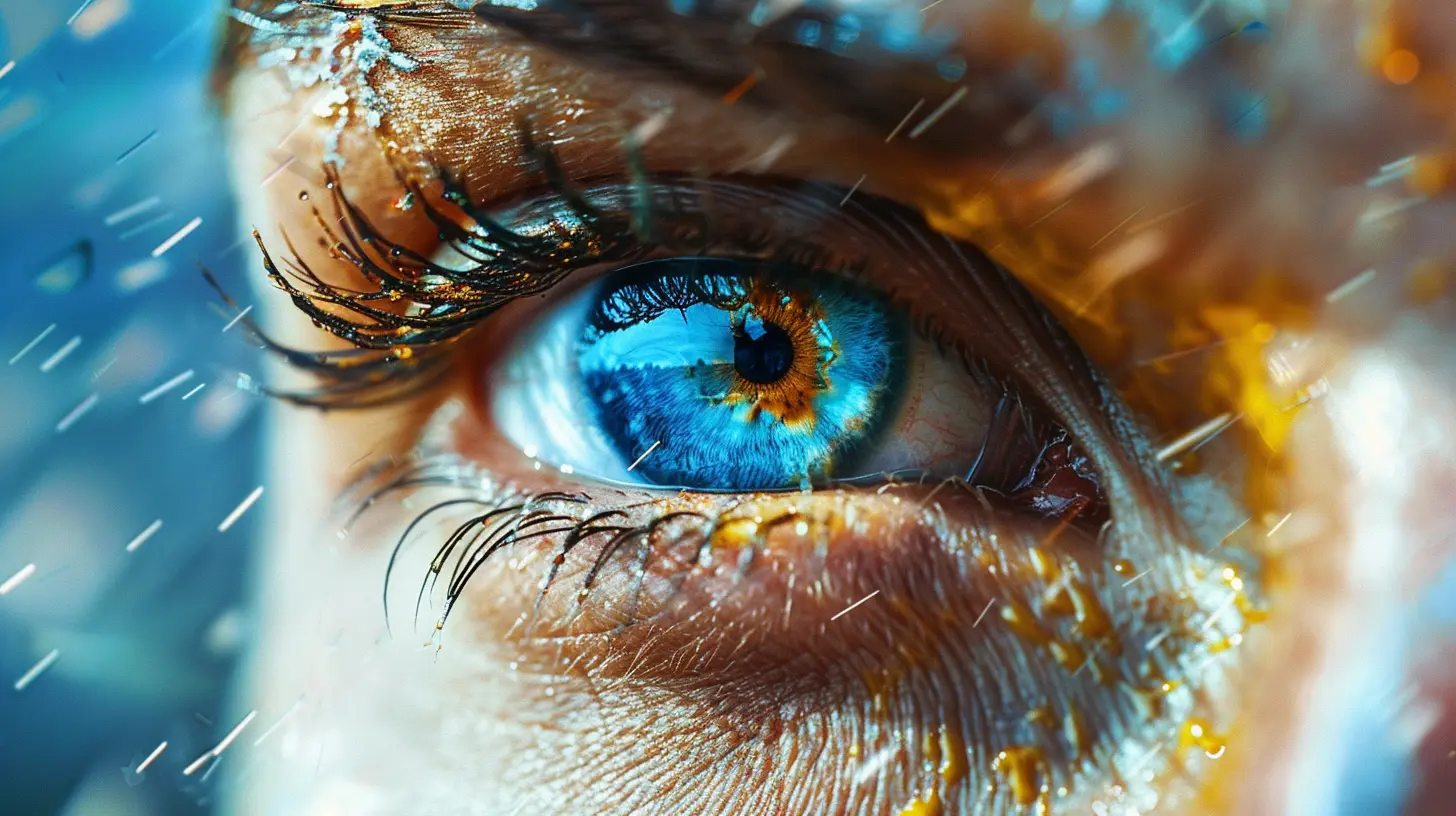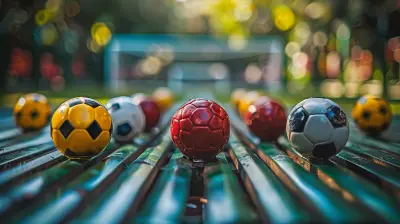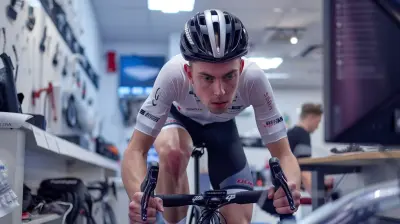The Role of Vision in Sports: How Athletes Train Their Eyes
26 November 2025
When we think about athletes, what usually comes to mind? Strength, speed, agility, and maybe even incredible reflexes. But there’s one essential skill that often flies under the radar—vision. Not just being able to see clearly, but using vision as a powerful tool to dominate in sports.
It’s not just about having 20/20 vision. Athletes train their eyes the same way they train their bodies. Crazy, right? But absolutely true. Let's dive into how vision plays a surprisingly massive role in sports performance and uncover how athletes train their eyes to stay ahead of the game.
Why Vision Is A Game-Changer In Sports
Let’s get real for a second—you can’t react to something you can’t see. Whether it’s tracking a fastball, dodging a punch, or scanning the field for an open teammate, elite vision skills are crucial. In fast-paced sports, decisions are made in split-seconds, and that’s where sharp visual processing comes in like a superhero.Vision Isn't Just Sight
Here’s something many people don’t realize—vision and sight aren’t the same thing. Sight is simply the ability to see. Vision is how your brain processes what you see. It includes things like depth perception, peripheral awareness, eye tracking, and even reaction time.Let’s break it down...
Key Visual Skills In Sports
To really understand how athletes train their vision, we need to first take a look at the visual skills they focus on:1. Dynamic Visual Acuity
This is the ability to see clearly when things are moving. Think about hitting a tennis ball as it's zooming toward you. Your eyes need to lock onto it and stay focused, even when it's flying at you like a rocket.2. Depth Perception
If you can't judge how far or how close something is, you're toast. Whether you're a quarterback throwing a deep pass or a soccer goalie anticipating a shot, you need excellent depth perception.3. Peripheral Vision
Athletes need to be aware of what’s happening around them—even at the edges of their vision. A basketball player, for example, needs to see a defender coming up from the side without looking directly at them.4. Eye-Hand Coordination
This is the magic that links what you see with how your body reacts. Sports like baseball, boxing, table tennis—all demand lightning-fast eye-hand coordination.5. Visual Reaction Time
How quickly your brain can interpret what your eyes see and tell your body to act. A millisecond delay can mean the difference between a win and a loss.
How Athletes Train Their Vision
Athletes are starting to treat their eyes like muscles. And just like with fitness training, they use specific exercises, drills, and technology to level up their visual game.1. Vision Training Tools
Let’s talk gadgets. Athletes use some high-tech toys to sharpen their visual skills. Here are a few cool tools:- Strobe Glasses: These glasses blink so your vision is temporarily blocked. It forces your brain to anticipate motion better and react faster.
- Light Boards (like FitLight Trainer): Lights flash in different patterns, and athletes have to tap or reach for them as fast as possible. This improves reaction time and peripheral vision.
- Virtual Reality (VR): Simulates real-life game environments in a controlled setting where athletes can train without physical risk.
2. Eye Exercises
You don’t always need fancy gear. Regular eye exercises work wonders too:- Tracking drills: Following a moving object with your eyes improves dynamic visual acuity.
- Convergence exercises: Focusing on a near object and then switching to a distant one trains depth perception.
- Peripheral drills: Using flashcards or apps to detect images in your side vision while focusing straight ahead.
These might sound simple, but over time, they dramatically improve an athlete’s ability to process visual information quickly.
Sport-Specific Vision Training Examples
Vision training isn’t one-size-fits-all. Different sports demand different visual strengths. Let’s take a look at how various athletes dial in their eye skills.Baseball: Timing And Tracking
Try hitting a 90 mph fastball. You have about 0.4 seconds to see the ball, decide whether to swing, and actually swing. It’s all about elite pitch tracking and rapid visual decisions. Baseball players often use strobe glasses and tracking drills to keep their eyes fast and focused.Football: Scanning the Field
Quarterbacks need to scan the field, read defensive setups, and calculate distances—all in real time. Peripheral awareness and depth perception are crucial here. Many QBs work on field vision using VR simulations and peripheral training to expand their visual field.Soccer: Spatial Awareness And Reaction
In soccer, play develops all around you. Players must track the ball, opponents, and teammates at once. Fast shifts in focus and strong peripheral vision keep them one step ahead.Boxing/MMA: Reaction And Eye-Hand Coordination
Combat sports are all about anticipating opponent movements. Fighters train their visual reaction time to dodge punches and find openings—often just a few inches wide. They use reflex drills and light boards to maintain top-tier reaction speeds.The Psychology Behind Vision
Vision isn't only physical—it’s deeply mental too. Your brain is the boss here, processing all the signals from your eyes and telling your body how to respond.This is where mental toughness comes into play. Athletes who stay calm under pressure generally have better visual focus. Stress causes tunnel vision—literally—cutting down your peripheral awareness. That’s why mental training is often combined with visual training.
Meditation, visualization, and breathing exercises? Yep, those help sharpen vision too—by keeping the brain focused and calm under fire.
Youth Athletes: Starting Vision Training Early
Great vision skills can be developed, especially when started early. Youth athletes who integrate visual drills early on often pick up tactical decision-making faster and stand out in their sport.Just like how learning proper form young sets the stage for stronger muscles, building visual strength early can act as a foundation for future excellence.
So, if you’ve got a young athlete in your life—start now. Train those eyes early, and they’ll thank you later.
Can You Improve Your Own Athletic Vision?
Absolutely! Even if you’re not a pro athlete, better visual skills can up your game in everything from weekend pick-up basketball to mountain biking trials.Here’s a mini routine to get you started:
- Warm-up with eye circles (move your eyes in circles without moving your head)
- Track a tennis ball being thrown back and forth
- Practice quick focus shifts (look at your thumb, then a faraway object, repeat)
- Download a reaction-based training app (like NeuroTracker or BlazePod)
Do this consistently, and you’ll start noticing faster reaction times and sharper visual awareness—on and off the field.
The Unsung Hero Of Athletic Performance
We often give credit to speed, stamina, and skill—but vision? It’s the silent MVP. The ability to see, process, and react faster than your opponent is a weapon, and it's one that many athletes are finally beginning to master.So next time you watch a quarterback thread a perfect pass, a tennis player return a blazing serve, or a fighter dodge a punch like it's in slow-mo—remember, it’s not just about muscle or talent.
Their eyes are doing a ton of the work.
Final Thoughts
Training the eyes isn’t flashy. There’s no scoreboard or highlight reel for visual acuity, but the competitive edge it provides? That’s undeniable.If you’re serious about improving your performance on the field, the court, or anywhere in between—don’t overlook your vision. It might just be the edge you've been searching for.
So, go ahead—train your eyes. See the game differently.
all images in this post were generated using AI tools
Category:
Sports ScienceAuthor:

Frankie Bailey

